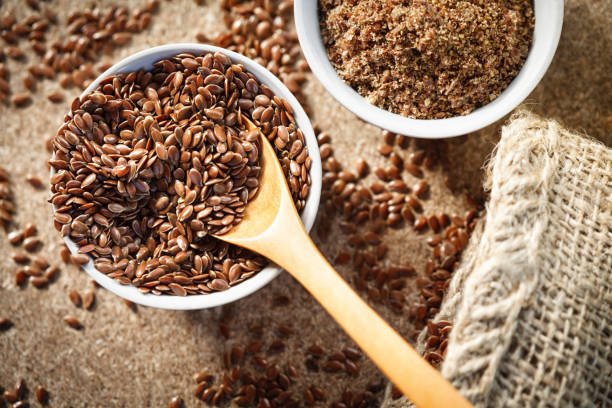Flaxseeds
Name
Arabic: بذور الكتان
English: Flaxseed or Linseed
Botanical Description
Flaxseeds are small brown or golden seeds that come from the flax plant (scientific name: Linum usitatissimum). This plant belongs to the Linaceae family. The plant is characterized by small blue flowers and a slender stem, reaching a height of about 1 meter.
Types
Brown Flaxseeds: The most common and widely used.
Golden Flaxseeds: Slightly higher in omega-3 fatty acids.
Benefits
Heart Health: Flaxseeds contain omega-3 fatty acids that help reduce bad cholesterol.
Digestive Health: Rich in fiber, they promote digestive health.
Anti-inflammatory: Contains antioxidant compounds that reduce inflammation.
Blood Sugar Regulation: Helps improve insulin sensitivity.
Skin and Hair Health: Contains nutrients that promote skin and hair health.
Medical Uses
Dietary Supplement: Used to enhance overall health.
Constipation Relief: Due to their high fiber content.
Menopause Symptom Relief: Helps regulate hormones.
Heart Health Support: Reduces the risk of heart disease.
Cultivation Methods
Soil: Prefers fertile, well-drained soil.
Climate: Grows best in temperate climates.
Irrigation: Requires regular but not excessive watering.
Planting Season: Planted in spring or fall depending on the climate.
Part Used as Medicine
Seeds: The main part used for medicinal and dietary purposes.
Active Components
Omega-3 Fatty Acids: Such as alpha-linolenic acid (ALA).
Dietary Fiber: Helps improve digestion.
Lignans: Antioxidant compounds.
Protein: Contains a good amount of plant protein.
Export details worldwide
Types: Seeds
Weight: 20 kg or 25 kg
Packing and packaging: Automatic
Packaging: Sacks or cartons
Container: 20 feet
Origin: Egypt


